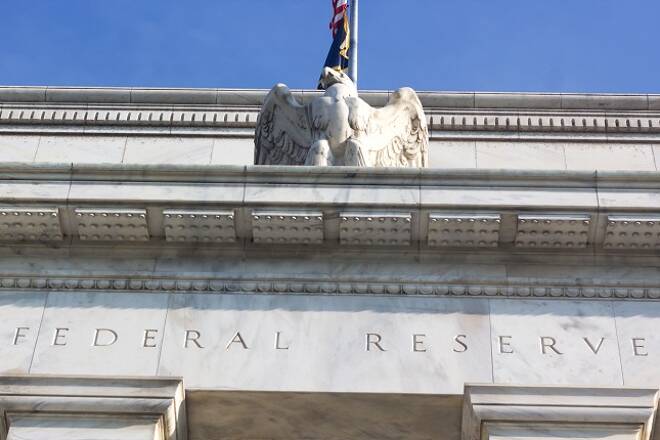Advertisement
Advertisement
Dovish FOMC Member Bostic Says Fed Should Be Patient With Rate Hikes
By:
In the absence of major economic reports, investors turned their attention to the Federal Reserve, where three officials were scheduled to speak.
It was a quiet day in the markets on Monday as more investors returned from their extended holiday vacations. Stocks continued to rally, U.S. government debt yields ticked higher, the U.S. Dollar rose against a basket of major currencies and gold prices fell slightly.
In the absence of major economic reports, investors turned their attention to the Federal Reserve, where three officials were scheduled to speak.
Federal Reserve Bank of Atlanta President Raphael Bostic said the central bank should be patient as it raises rates this year. He joins other dovish Fed officials who are concerned by low inflation and the risk of an inverted yield curve.
“I am comfortable continuing with a slow removal of policy accommodation,” Bostic, who votes on policy this year for the first time in his Fed career, said Monday in Atlanta. “However, I would caution that that doesn’t necessarily mean as many as three or four moves per year.”
Bostic added that he only expected a modest bounce to growth from the tax measures. He later told reporters his base case for Fed hikes this year was “two to three, with the idea that data is going to come in to really inform how aggressively we can be moving our policy.”
Additionally, Bostic said, “My main concern is that inflation expectations risk becoming anchored below 2 percent. If this happened, it would be increasingly difficult for the Fed to hit our 2 percent target.
In other news, San Francisco Fed President John Williams argued in favor of a price-level target during a presentation at the Brookings Institution in Washington. Boston Fed President Eric Rosengren said he would prefer adopting an inflation range, rather than a precise target as the Fed currently does, because a range would give the Fed greater flexibility to allow for higher or lower inflation depending on how the economy is performing. He floated an inflation range of 1.5% to 3% as one that might be appropriate.
U.S. Equity Indexes
The major U.S. stock indexes finished mixed on Monday with the S&P 500 Index and NASDAQ Composite Index closing at all-time highs and the Dow Jones Industrial Average closing lower. The markets were generally supported by expectations of U.S. economic growth.
The S&P 500 Index was supported by a rise in nine of 11 sectors, led by utilities. The NASDAQ was led higher by strong performances in Facebook, Amazon, Google-parent Alphabet and Netflix. The Dow snapped a four-day winning streak on low volume.
Gold
Gold prices edged lower on Monday in reaction to a stronger U.S. Dollar. The Greenback was supported by expectations of more U.S. interest rate hikes this year. Investors have been driving U.S. Treasury yields higher since Friday’s payrolls data did nothing to derail the outlook for monetary policy tightening by the U.S. Federal Reserve later this year. When rates rise, demand for dollar-denominated gold tends to drop.
Crude Oil
Crude oil prices finished higher on Monday, but inside a tight range on low volume. Despite the muted price action, crude oil remained near a 2 1/2 –year high. Underpinning the market was renewed speculative bets on further strength amid the OPEC-led production cuts and a decline in U.S. drilling activity.
About the Author
James Hyerczykauthor
James Hyerczyk is a U.S. based seasoned technical analyst and educator with over 40 years of experience in market analysis and trading, specializing in chart patterns and price movement. He is the author of two books on technical analysis and has a background in both futures and stock markets.
Advertisement
